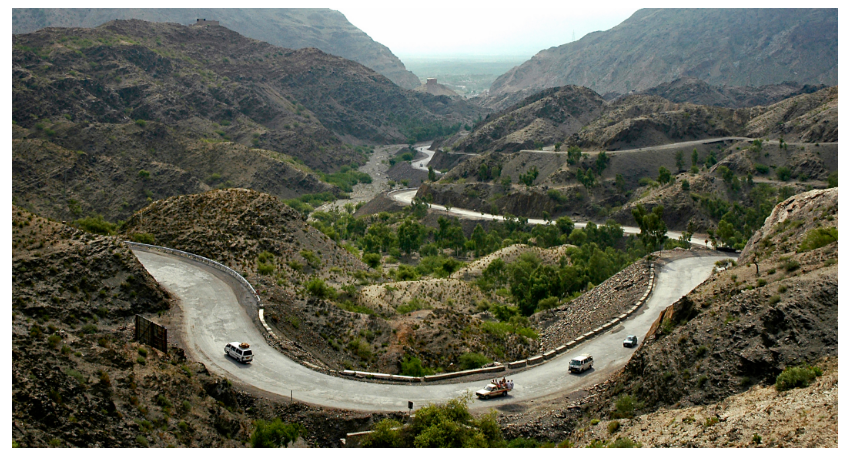Nestled on the southern slopes of the Himalayas, India has long been a land of vibrant cultures, rich history, and unique geographical advantages. As one of the cradles of ancient civilization, its position on the South Asian subcontinent appears strategically advantageous. Surrounded by the vast Bay of Bengal to the east, the Arabian Sea to the west, and the Indian Ocean to the south, India’s northern frontier is dominated by formidable mountain ranges, including the towering Himalayas, the Sulaiman Range, and the Hindu Kush.

At first glance, such natural barriers should have made ancient India nearly impervious to external invasions. However, history tells a different story—India has frequently fallen victim to foreign incursions. Why?
A closer look at the geography reveals a crucial vulnerability: the Khyber Pass. Carved through the Hindu Kush mountains, this narrow passage—known as the “Gateway to India”—has facilitated invasions for thousands of years. The Indo-Aryans, Alexander the Great’s Greek forces, Arab conquerors, Mongols under Babur, and Turkic invaders all exploited this passage to penetrate the fertile plains of the Indian subcontinent.

A Pass That Should Have Been Defensible
The Khyber Pass is about 70 kilometers long, with the Kabul River valley at an elevation of around 1,000 meters. The narrowest point is just 600 meters wide, with steep cliffs rising 60 to 90 meters on either side. These features should have made it an ideal location for fortifications. If properly defended, the pass could have served as a near-impenetrable choke point.
Yet, unlike China, which systematically fortified the Hexi Corridor to block nomadic incursions, India historically left the Khyber Pass undefended. Why was such a crucial military zone left open to invaders?
Why India Failed to Fortify the Khyber Pass
1. Lack of Centralized Authority
Unlike China, which maintained a strong, centralized imperial government, ancient India was often divided into competing kingdoms. The subcontinent was politically fragmented, with up to sixteen major regional powers at various points in history, often warring with each other. This disunity made coordinated military efforts difficult, if not impossible.
Even during times of relative unity—such as under the Maurya or Gupta Empires—control was often limited to the Ganges River basin. The northwestern territories, where the Khyber Pass is located, were usually on the periphery of Indian rulers’ concerns. When external threats loomed, Indian kingdoms often failed to form a unified resistance, preferring internal rivalries over national defense.
2. The Geographic and Economic Challenges of Defense
Unlike the Hexi Corridor in China, which was transformed into a defensive stronghold through military garrisons and farming colonies, the Khyber Pass region lacked the necessary conditions for sustained defense.
- Harsh Environment: The region receives less than 200 mm of rainfall annually, making large-scale agriculture difficult. Unlike China’s frontier settlements, which could sustain themselves through grain production, a military presence in the Khyber Pass would have required constant supply lines from the interior—an impractical burden for ancient Indian states.
- Logistical Difficulties: Transporting troops, food, and supplies from the fertile Ganges or Indus River valleys to the mountainous Khyber region would have been a monumental challenge, given the lack of infrastructure in pre-modern India.
- Economic Priorities: The Khyber Pass was not just a military gateway but also a critical trade route linking Central Asia and the Indian subcontinent. Rulers often prioritized commerce over security, preferring to keep the pass open for trade rather than fortifying it against potential invaders.
3. Cultural and Social Factors
Indian civilization, shaped by its unique caste system, also played a role in its defensive shortcomings.
- Rigid Military Structure: Unlike in China, where commoners could rise through the ranks based on military merit (e.g., the Han Dynasty’s military farms system), ancient India’s warrior class was strictly limited to the Kshatriya caste. Lower-caste individuals were largely excluded from military service, significantly limiting the manpower available for defense.
- Lack of Historical Awareness: India did not develop a strong tradition of written historical records comparable to China’s meticulous dynastic histories. As a result, rulers may have lacked a clear sense of historical military strategy, failing to learn from past invasions.
- Religious and Philosophical Views: Hindu and Buddhist traditions often emphasized spiritual and economic prosperity over militarization. Unlike China, where frontier defense was a state priority, Indian rulers were less inclined to invest in military infrastructure.
A Calculated Gamble?
Surprisingly, despite its history of invasions, India has not been as frequently conquered as one might assume. From the Aryan migration (c. 1500 BCE) onward, there were fewer than ten major foreign invasions in over 3,500 years—an average of one invasion every 200 years.
For most rulers, investing heavily in fortifications for an event that might not happen in their lifetime simply wasn’t a cost-effective decision. Unlike China’s northern frontier, which faced constant nomadic threats, India’s western frontier was relatively peaceful most of the time.
Furthermore, since the Khyber Pass was a major trade route, completely sealing it off was not an attractive option. The region thrived as a commercial hub under various empires, from the Kushan Dynasty to the Mughal Empire, benefiting from Silk Road trade.
Conclusion
The inability—or unwillingness—of ancient Indian states to fortify the Khyber Pass was not merely a military oversight. It was the result of political fragmentation, logistical challenges, economic priorities, and cultural attitudes that collectively shaped the region’s historical trajectory.
Rather than seeing the Khyber Pass as an Achilles’ heel, ancient Indian rulers may have viewed it as an unavoidable trade-off: an open gateway that brought both prosperity and occasional peril. In the grand scheme of history, they may have been more interested in what came in through the pass than what went out.

No comments yet.